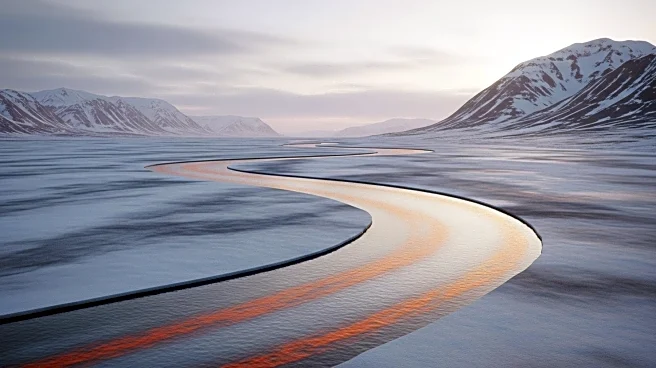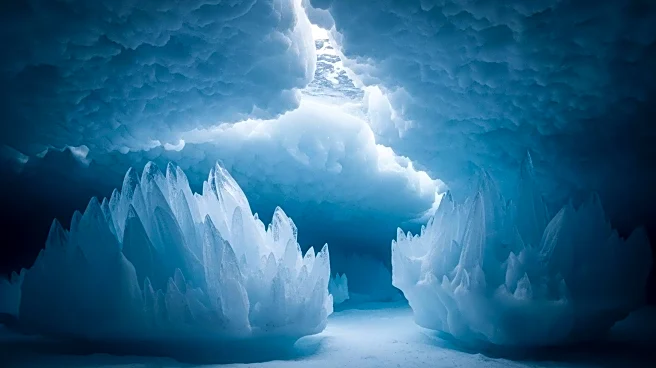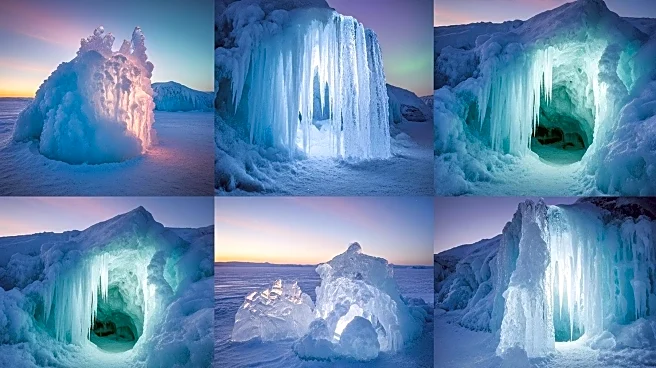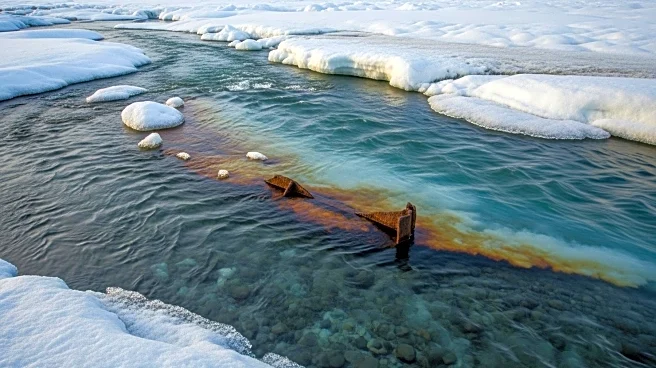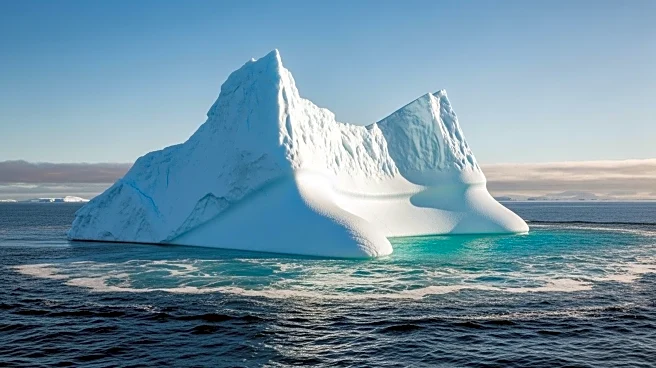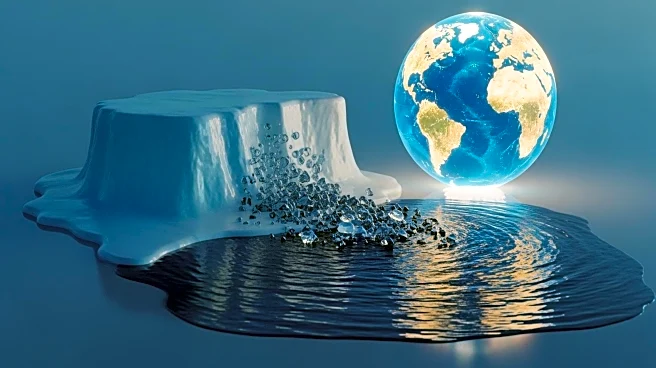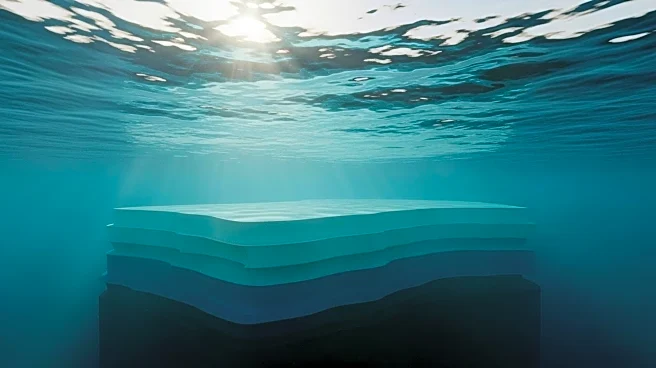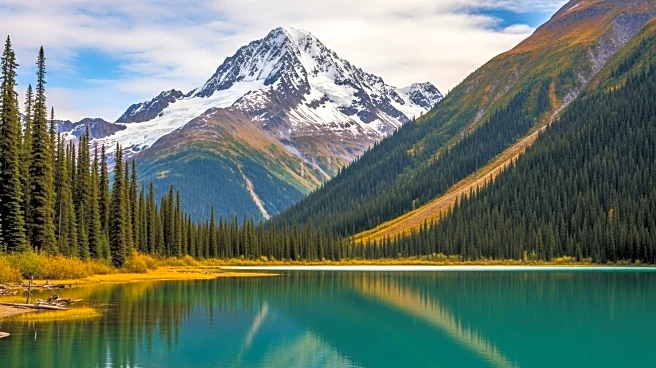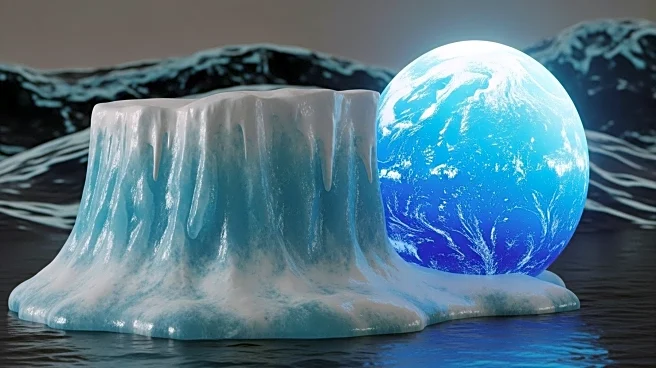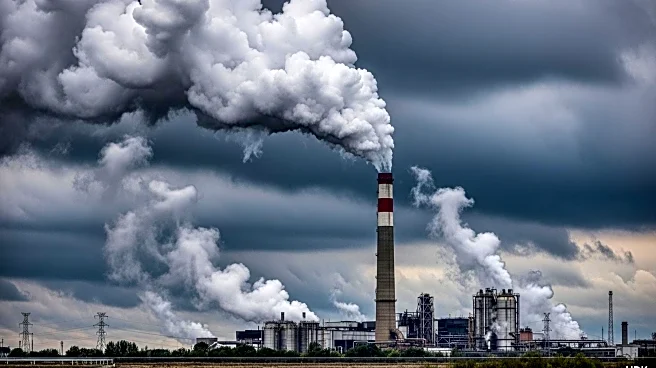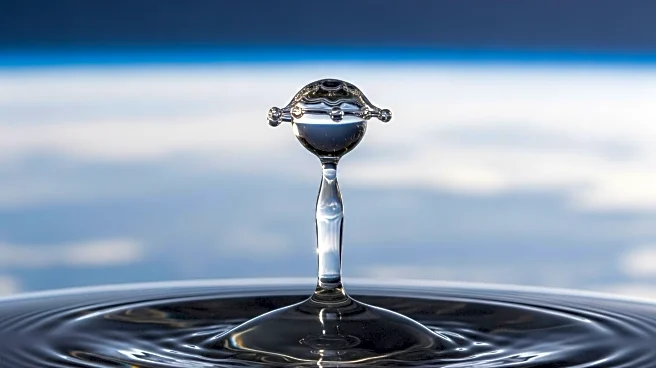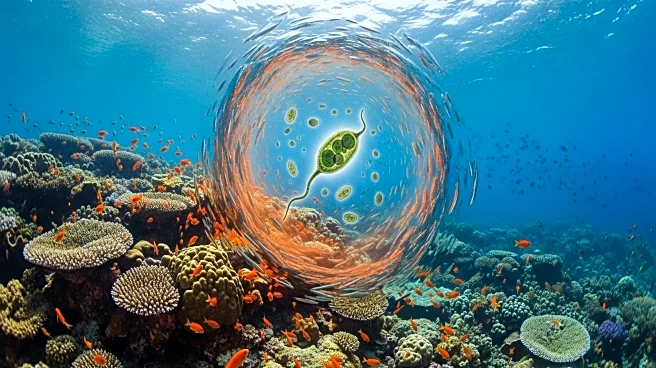What is the story about?
What's Happening?
A study from Umeå University has discovered that ice can dissolve iron minerals more effectively than liquid water, explaining why Arctic rivers are turning rusty orange as permafrost thaws. The research, published in PNAS, shows that ice at minus ten degrees Celsius releases more iron from minerals than liquid water at four degrees Celsius. This challenges the belief that frozen environments slow chemical reactions. The study highlights how freeze-thaw cycles in ice create acidic conditions that facilitate iron dissolution, impacting water quality and ecosystems.
Why It's Important?
The findings are crucial for understanding the environmental impact of climate change in Arctic regions. As global temperatures rise, increased freeze-thaw cycles could lead to more iron being released into rivers, affecting aquatic ecosystems and water quality. This research underscores the active role of ice in chemical processes and its potential to alter natural cycles of elements. The study provides insights into how climate change could transform Arctic landscapes and ecosystems, emphasizing the need for further research and monitoring.
What's Next?
Ongoing research in the Boily laboratory aims to determine if similar processes occur in all iron-bearing ice. Understanding these mechanisms could help predict future changes in Arctic environments and guide conservation efforts. Researchers will continue to explore the implications of increased iron dissolution for ecosystems and water quality, potentially informing policy decisions related to climate change adaptation.
AI Generated Content
Do you find this article useful?
